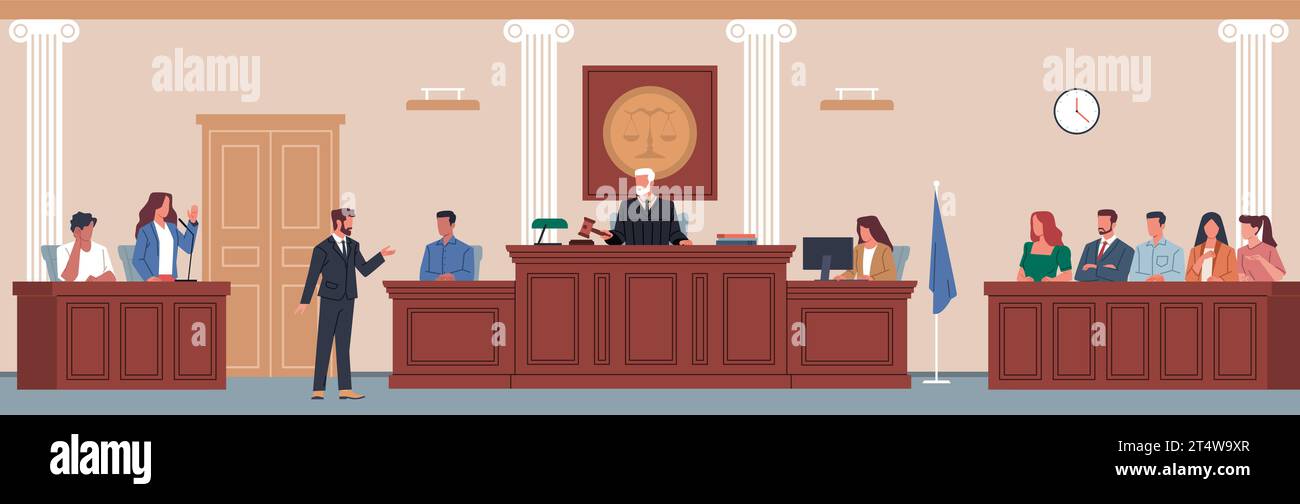Trial Presentation Improving Legal Cases with Effective Evidence Support
Trial Presentation Improving Legal Cases with Effective Evidence Support
Blog Article
Unlocking the Tricks of Effective Test Presentations: A Thorough Method
In the world of legal technique, the effectiveness of trial presentations can frequently figure out the end result of an instance. A thorough strategy that includes comprehending the target market, crafting compelling narratives, and employing effective delivery techniques is vital for lawyers aiming to make a long lasting influence. By strategically customizing presentations and utilizing visual aids, one can streamline intricate lawful disagreements and improve interaction. The subtleties of preparing for unforeseeable inquiries and preserving calmness need more exploration, as they are crucial to mastering the art of persuasion in the court room.
Comprehending Your Audience
Understanding your target market is a critical part of delivering an effective trial discussion. Understanding that will be obtaining the info enables presenters to tailor their strategy effectively, guaranteeing that the message resonates with jurors, courts, and other stakeholders. This involves not only acknowledging their market qualities yet also understanding their values, beliefs, and possible prejudices that may affect their perceptions.
Research study shows that jurors often bring individual experiences and preconceived ideas into the court. Consequently, it is critical to engage with them on a relatable level, offering debates that line up with their point of views while concurrently challenging them professionally. The ability to expect their questions and concerns can substantially improve the persuasiveness of the discussion.
Moreover, an effective test discussion calls for an understanding of the jurors' focus periods and cognitive processing styles. By leveraging this target market understanding, attorneys can construct a narrative that is not just compelling yet likewise unforgettable, eventually leading jurors toward a desirable choice.
Crafting Compelling Narratives

To create an effective narrative, lawyers need to start by identifying the core message they want to share (trial presentation). This message ought to be clear and consistent, permitting jurors to comply with the story without complication. Integrating relatable characters, dazzling summaries, and emotional arcs can considerably enhance the narrative, making it more remarkable and persuasive
In addition, it is important to present the story in a sensible sequence. Utilizing sequential order or thematic organization can help jurors realize the unfolding events and their effects. Attorneys need to likewise bear in mind the pacing, ensuring that vital minutes receive ideal emphasis while keeping the general flow of the discussion.
Ultimately, a compelling narrative can bridge the gap between lawful complexities and human experiences, permitting jurors to get in touch with the situation on both intellectual and psychological levels. This link can considerably affect their deliberations and the last end result of the test.
Aesthetic Aids and Technology
Reliable usage of aesthetic help and technology can substantially enhance test discussions, offering jurors with clear and interesting representations of complicated details - trial presentation. By incorporating properly designed graphes, graphs, and images, attorneys can boil down detailed data right into absorbable formats that help with understanding. Such aesthetic components offer not just to highlight vital factors but likewise to strengthen the story developed during the trial
Furthermore, innovation can boost interactivity, allowing for real-time demonstrations or simulations that can clearly portray events or situations essential to the case. Devices such as video evidence, interactive timelines, and 3D designs can bring a feeling of realistic look that fixed discussions lack. These advancements not only capture attention yet additionally help in memory retention, ensuring that jurors can remember vital information during deliberation.
Straining jurors with too much info or overly complex visuals can lead to complication instead than clarity. Instead, a tactical choice of appropriate visuals, paired with succinct explanations, can produce a more influential and impactful discussion.
Effective Distribution Strategies
An attorney's shipment techniques can substantially influence the impact of their test discussions. Additionally, the lawyer's voice inflection-- varying pitch, tone, and quantity-- can emphasize vital factors and share emotion, making the discussion more compelling.
Body movement likewise plays an essential function. trial presentation. Certain pose and purposeful motions reinforce the spoken word, while preventing disruptive activities can maintain the court focused on the message. Pauses, purposefully utilized, permit jurors to take in complicated details and create anticipation for what follows
Additionally, an attorney must customize their shipment to the target market, taking into consideration elements such as juror demographics and case specifics. This personalization helps ensure that the message image source reverberates extra site web deeply. Last but not least, practicing the presentation in front of peers can offer important comments on delivery style, enabling improvements that boost effectiveness. By honing these distribution strategies, attorneys can considerably elevate their test discussions and enhance their possibilities of success.
Preparing for Q&A Procedure
Understanding delivery strategies lays a strong structure for an attorney's performance in test presentations, yet similarly vital is the preparation for Q&A sessions that often comply with. Reliable prep work for these sessions ensures that lawyers can attend to questions with confidence and persuasively, reinforcing their debates and maintaining reputation.


To prepare, attorneys should anticipate potential concerns from jurors, opposing guidance, and courts. This includes a comprehensive testimonial of situation products and comprehending the opposing arguments. Producing a checklist of feasible questions aids in establishing precise, succinct this hyperlink actions that straight deal with the concerns increased.
In addition, attorneys need to practice their feedbacks, either through simulated Q&A sessions or by involving colleagues for responses. This practice not only enhances confidence however likewise helps fine-tune distribution and tone, guaranteeing quality under pressure.
Final Thought
Finally, effective trial presentations pivot on a complex technique that includes a deep understanding of the audience, the growth of engaging narratives, and the critical use of visual aids and modern technology. Effective delivery methods and detailed preparation for anticipated concerns better improve the discussion's impact. By integrating these components, legal professionals can substantially enhance their ability to connect persuasive arguments, ultimately influencing juror understanding and decision-making in the court.
Report this page